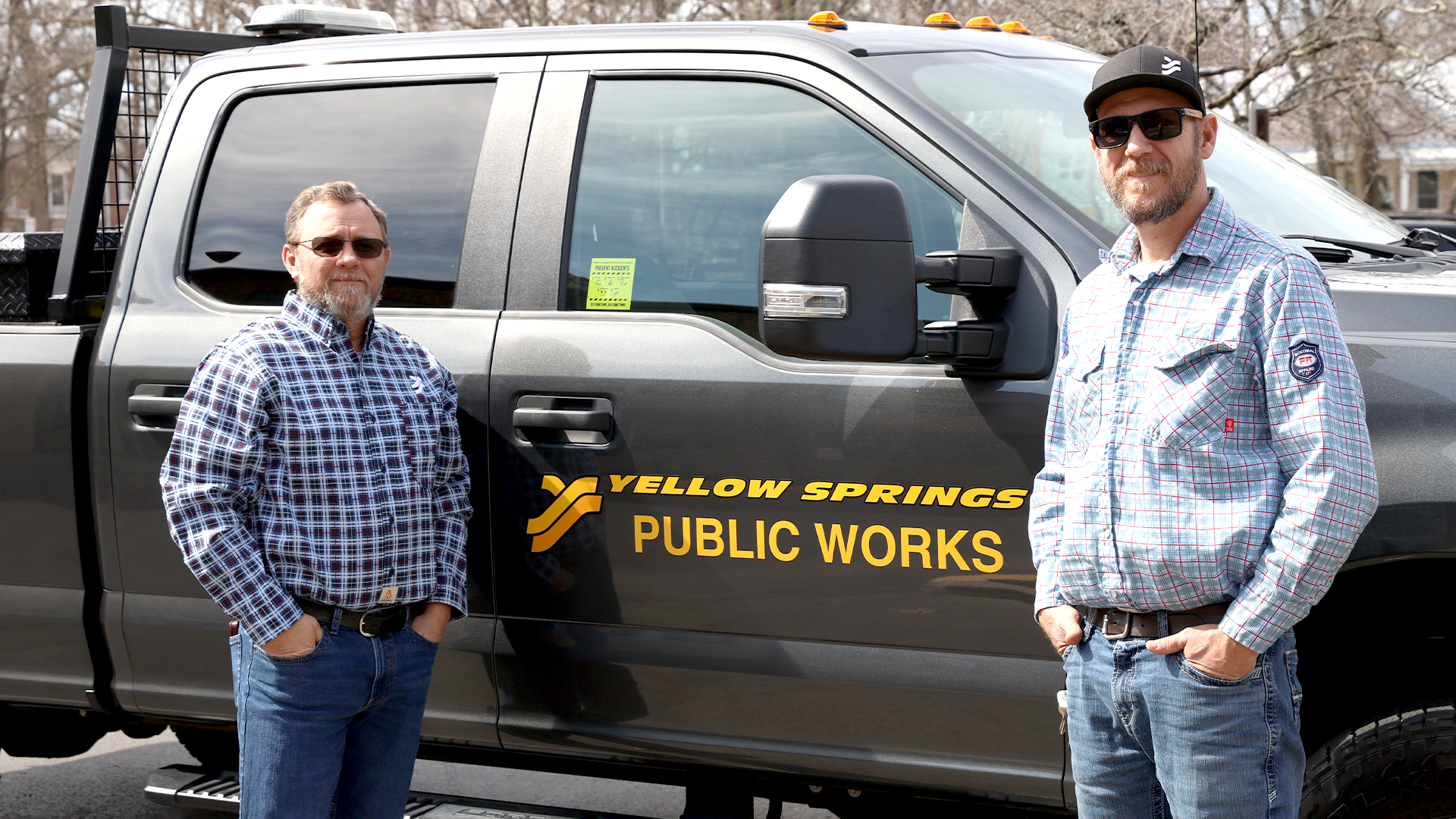| Population | 3,718 |
| Electric customers | 2,200 |
| Utility formed | 1929 |
| Utility employees | 4 |
For nearly 100 years, the residents of the Village of Yellow Springs, Ohio, a small community skirting the Dayton metropolitan area to its west and surrounded by national forest on its east, have owned their electric utility. The village took over operations of the electric system from Antioch College, which ran the system for 15 years after acquiring it from investor-owned utility Dayton Power and Light.
Johnnie Burns, village manager, said that the system has come a long way since those early days. Especially in the past decade, Burns and Ben Sparks, the village’s electric and water superintendent, have been making strides to improve and modernize the electric distribution system.
“We came wanting to make things better,” said Sparks. “We were already hitting a lot of marks, but there’s always room for improvement.”
One of the first efforts Burns and Sparks undertook when they took on their roles in 2014 was to get all utility poles throughout the village inspected. About 250 poles — about 10% of the village’s system — were flagged as needing immediate replacement. The team worked hard to try and replace all rejected poles, which were mostly in customers’ back yards, in-house. The utility is now at a point where crews are able to replace poles within the year of being tested, should they get flagged for replacement.
The utility recently earned a Diamond-level Reliable Public Power Provider designation, which is bestowed on utilities that receive top scores for reliability, safety, workforce development, and system improvement. The utility scored 14 points higher than the previous time it had applied.
Sparks said the most notable improvements came in its safety areas, which reflects the utility’s efforts to put new policies in place, insource certain functions, regularly test equipment, and extend training opportunities for the village’s crew members. Sparks also gathers his crew and people from other departments across the city for monthly safety meetings. That meeting includes running through various scenarios individuals might encounter and discussing ways to improve processes. The village has had zero lost time incidents for seven years running now and is also a Diamond-level Safety Award winner.

The village also recently completed a two-year effort to upgrade all customers to advanced metering infrastructure. Next, Burns said the utility is working on integrating a SCADA system and getting new reclosers to continue to bring the system into the 21st Century.
Sparks said that he enjoys the camaraderie that comes from working with a small crew. “Because we are such a small community, we’re working with the same 2-3 guys each day. We’re more than just coworkers. Especially in the line side, you have to put total trust in each other.”
Crew members also experience closeness with the villagers not found in working for an IOU.
“It’s more personal when you are out in the field,” noted Sparks. “If you have to do a disconnect, you may see the person in the grocery store the next day. Or you may be in a customer’s backyard in the middle of the night.”
“We have a better relationship with the electric customers than if you had a for-profit company,” added Burns. After all, with local governance, any member of the community could be their next boss.
They described the community as a friendly place where “nobody judges you for who you are or what you stand for.” The village downtown doesn’t have any major chain retail or big box stores and includes an array of local restaurants and shops that include items made by the vibrant local artist community. Beyond day-to-day work for the utility, employees live in the village or spend a lot of time attending local functions and supporting local businesses. Such events include two annual street fairs, a village safety event, a Christmas tree lighting, and a touch-a-truck experience.
Burns expressed that the public power utility remains an asset to the village. “It's more about a working relationship with our villagers,” he said. “We can control where we buy our power from. We are 100% renewable power, therefore, we can make sure that we're reducing our carbon footprint and we're able to control the outages as far as letting the customers know and how long it will be out.”
Burns and Sparks expressed appreciation for utility employees in making the utility’s value – and quality of life in the village – what it is today. In continually showing support for the community, they are also seeing how they’re preparing the next generation of crew members in carrying on this legacy. In completing the RP3 application the first time, the utility got the idea to not only review its wage scales, but also to start an apprenticeship program. These efforts are helping locals who grew up in the village develop their careers while helping their hometown.

